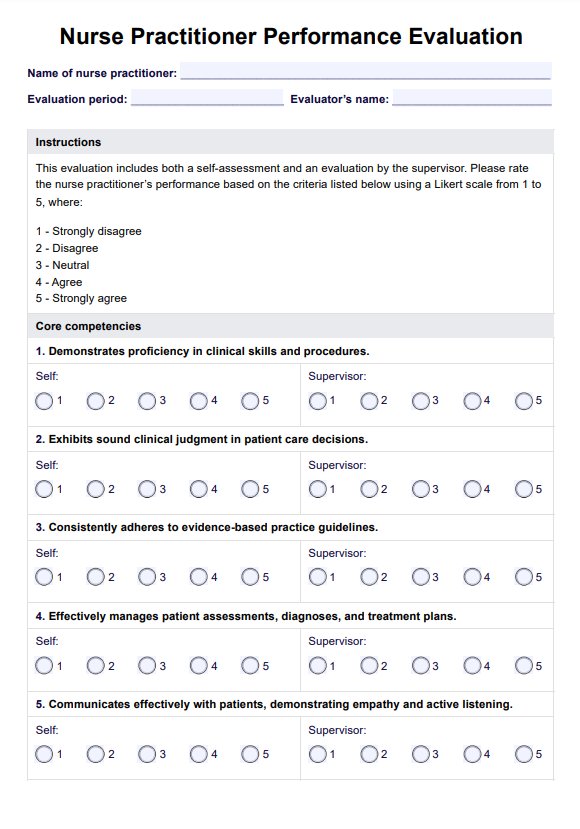Performance evaluations are typically conducted annually or biannually, although the frequency may vary based on organizational policies and individual needs.

Nurse Practitioner Performance Evaluation
Download our Nurse Practitioner Performance Evaluation template to improve clinical performance and professional growth in the healthcare system.
Use Template
Nurse Practitioner Performance Evaluation Template
Commonly asked questions
Evaluation may involve the nurse practitioner, supervisor or manager, patients, family members, and other relevant stakeholders within the healthcare system.
Yes, performance evaluations serve as valuable tools for identifying areas for improvement and setting goals for professional growth and skill enhancement.
EHR and practice management software
Get started for free
*No credit card required
Free
$0/usd
Unlimited clients
Telehealth
1GB of storage
Client portal text
Automated billing and online payments











